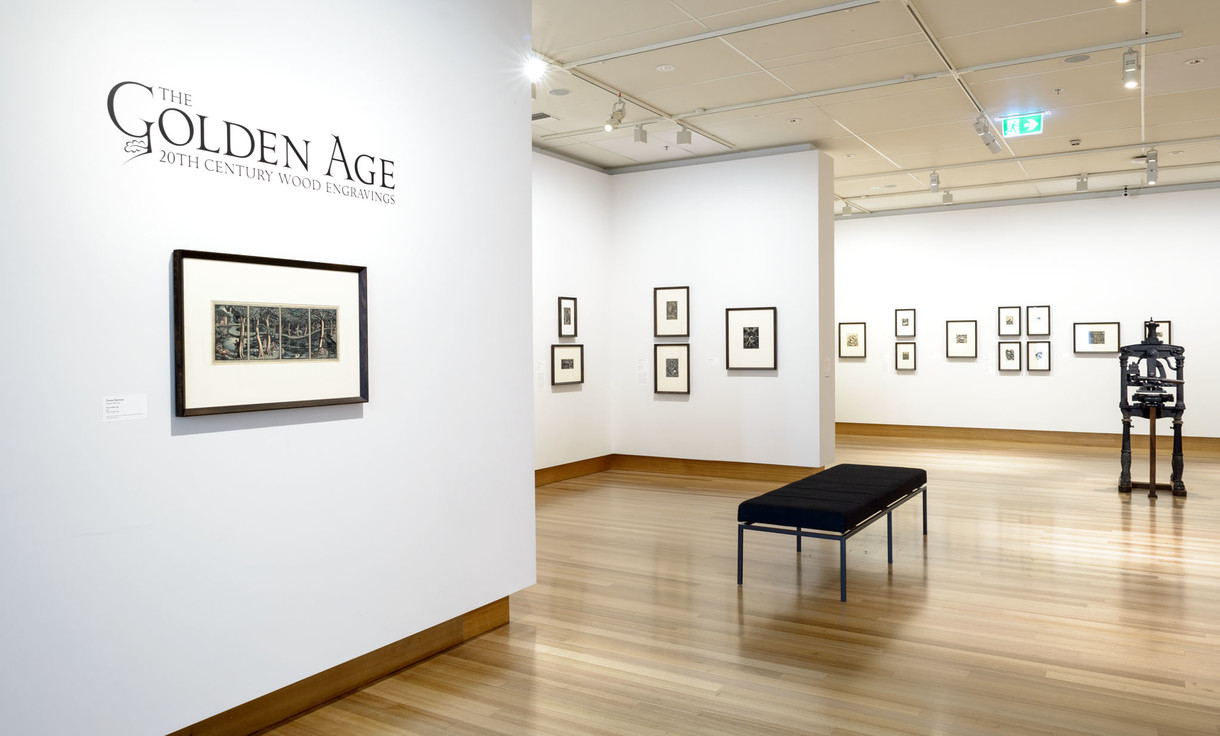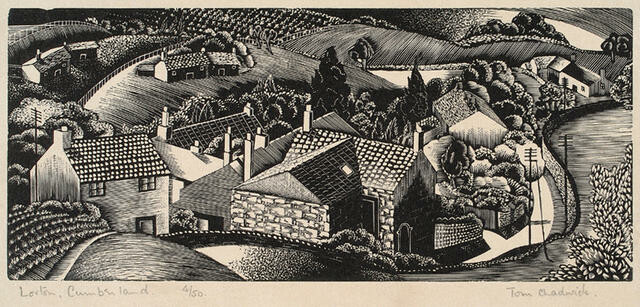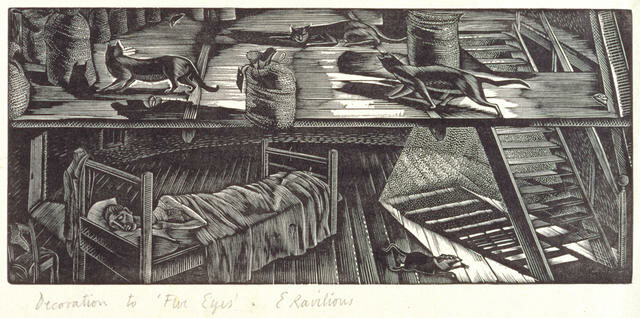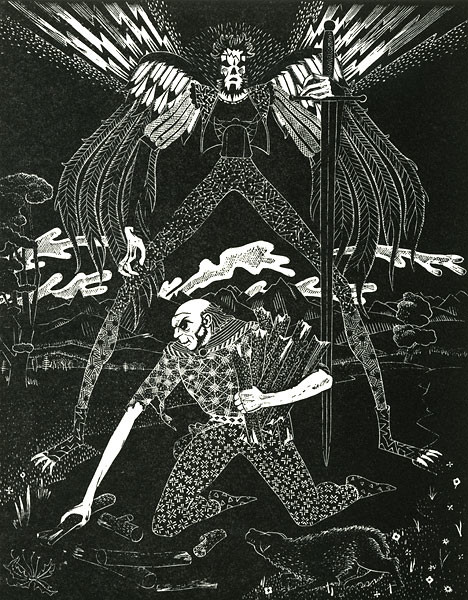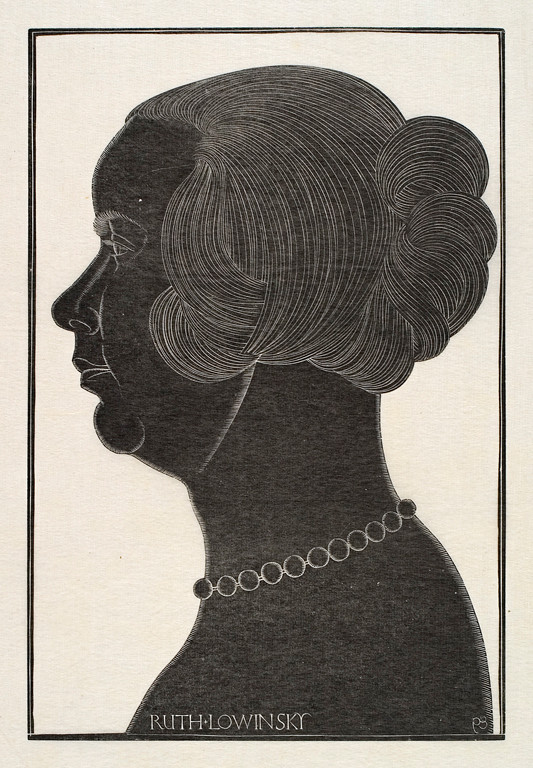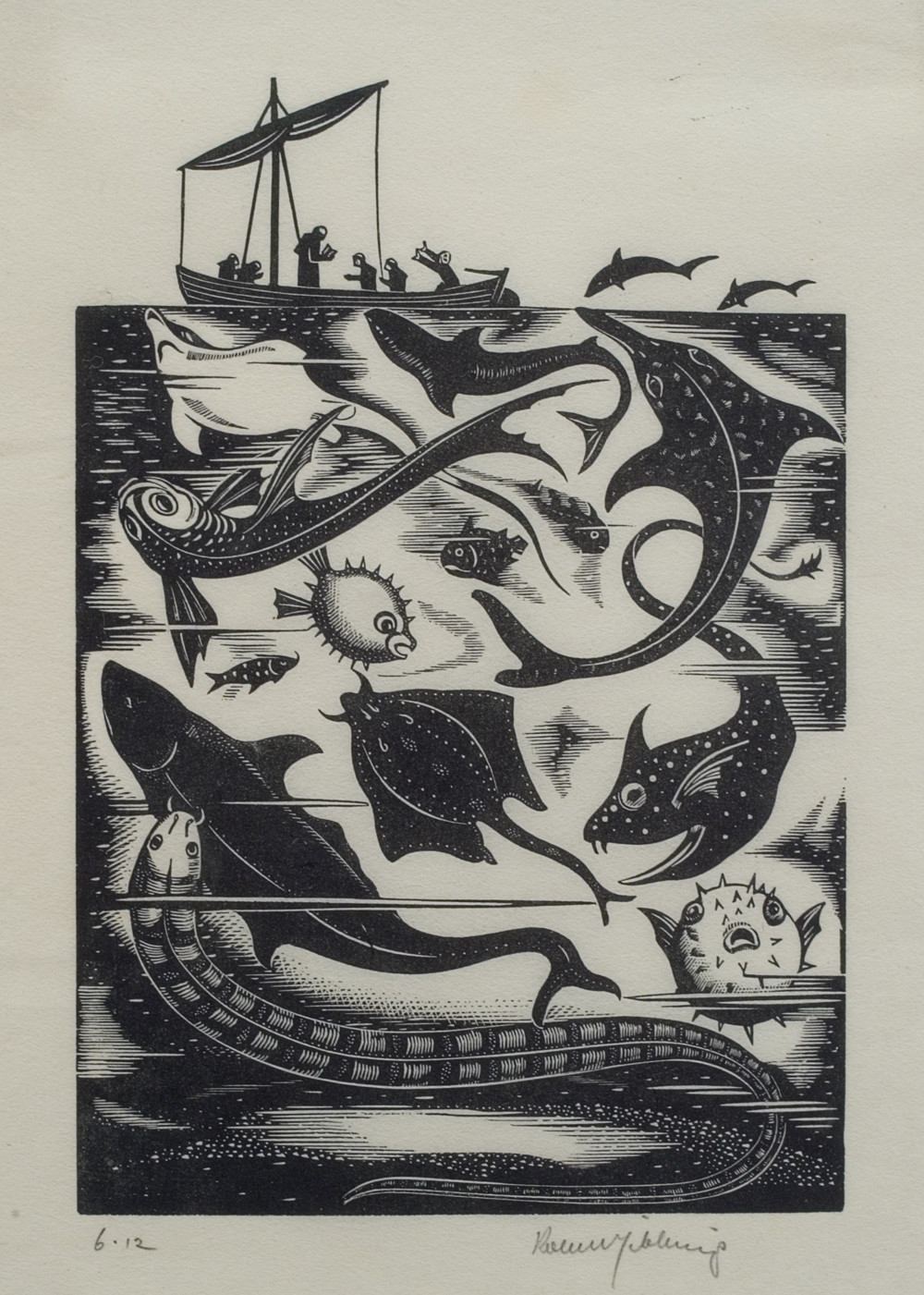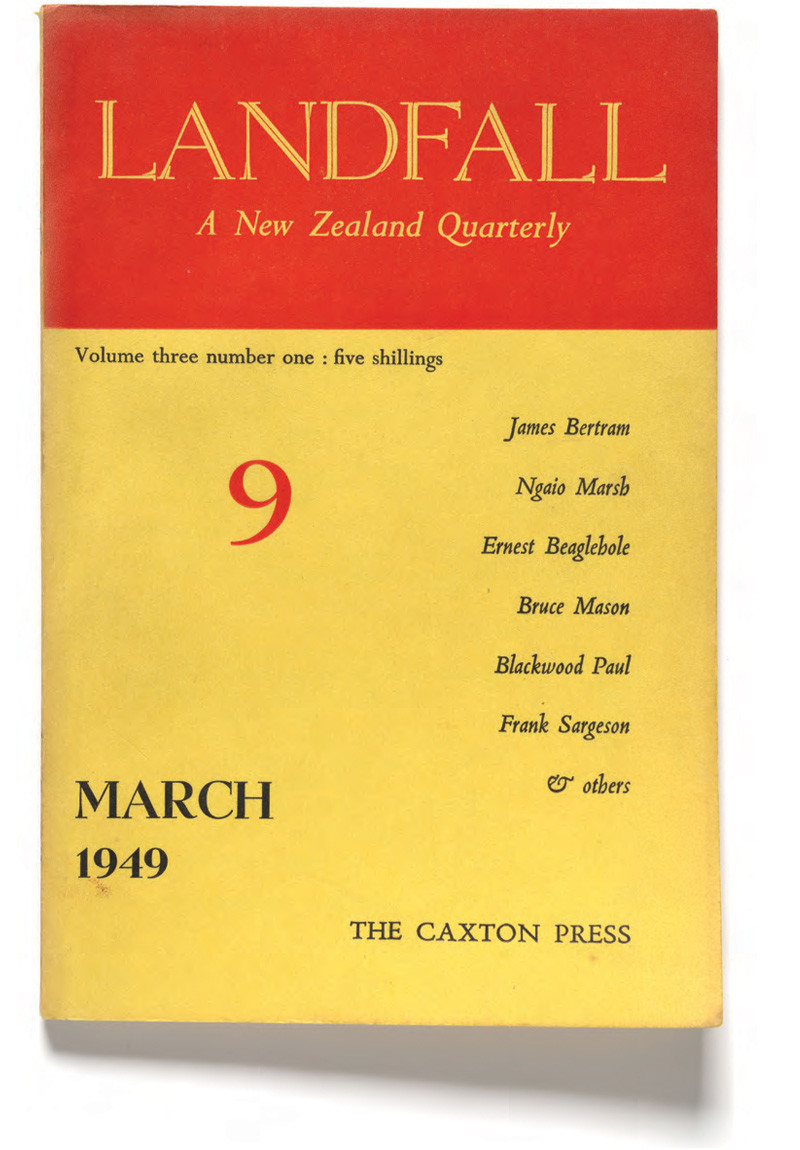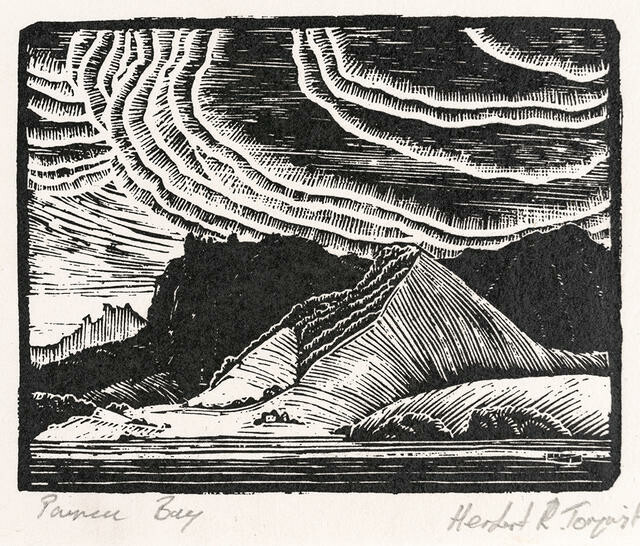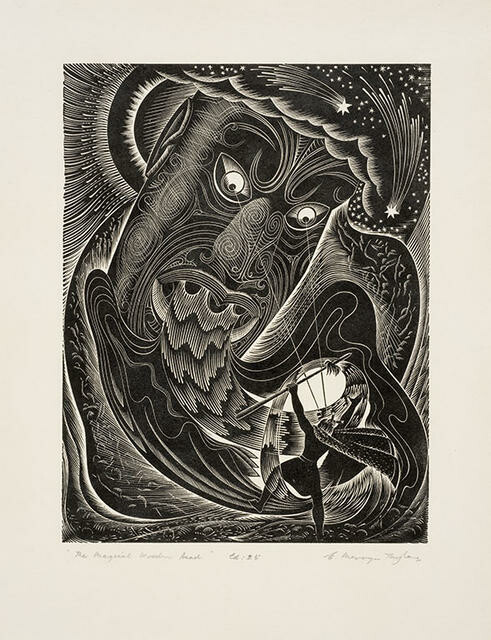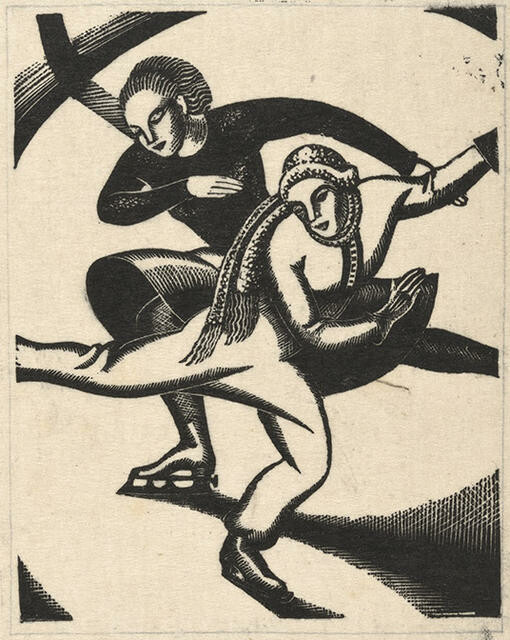B.
Lorton, Cumberland by Tom Chadwick
Collection
This article first appeared as 'Wood engraving artist finally won recognition' in The Press on 27 June 2014.
In 1953 Christchurch born, London based art dealer Rex Nan Kivell sent a parcel of prints to the art gallery in each of the four main cities in New Zealand. A gift of over 1000 prints, many of them of superlative quality, may seem extraordinary but it is likely that by 1953 they amounted to little more than surplus, pre-war, and all but unsellable, stock. When 300 prints reached Christchurch they were duly, and unsurprisingly, ignored. Until the 1990s that is, by which time tastes had changed and 1930s modernist prints had become highly sought after.
Amongst the 300 was this delightful wood engraving by Tom Chadwick. Chadwick was born in 1912 in Jamaica and moved with his parents to England in 1916. In 1932, at the age of 20, he enrolled at the Grosvenor School of Modern Art, the private art school founded by Ian Macnab in 1925. During its brief existence (it closed in 1940), the Grosvenor School re-invigorated British print-making; it is associated particularly with the revival of the linocut.
Chadwick was deeply influenced by Iain Macnab whose trademark combination of subtle gradations of tones with thoughtful design can be clearly seen in this work. It was exhibited at Rex Nan Kivell's Redfern Gallery in 1932 alongside the work of older, established engravers such as Eric Gill, Robert Gibbings, Eric Ravilious, Gertrude Hermes and Blair Hughes-Stanton – quite some achievement for a first year art student aged 20.
Chadwick spent four years at the Grosvenor School and then earned a living as a professional artist and illustrator working on commercial projects such as Christmas cards as well as regularly exhibiting paintings and prints. In 1939 he painted murals of footballers for 'The Spurs' public house in Tottenham and had great popular success with 'The Proverbs', a Breughelesque country scene where the puzzle is to work out which well-known sayings and proverbs are represented.
By the end of that year Chadwick was serving in the 3rd King's Own Hussars. He saw service in Greece and North Africa. He was killed, aged 30, at El Alamein, two days after his brother Hector lost his life in the same battle. They are buried beside each other in the El Alamein cemetery.
After the war tastes changed radically, abstraction rode the crest of its wave and works such as Chadwick's 'Lorton' would surely have seemed very old-fashioned.
But after several decades in the wilderness, work by artists of Chadwick's generation and style has been re-assessed and even the status of the humble linocut has been restored. Chadwick himself was off the radar for forty years but justice was done in 2012 when an exquisite book was written by Julian Francis. Splendidly designed and produced by the Fleece Press, with very fine reproductions of all Chadwick's known work, it too is a work of art.
Tim Jones

